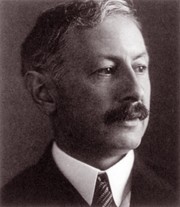
“The prize was awarded in recognition of the scientific rigour and the theoretical and practical significance of the research conducted by Professor Karrer on the structure of polymeric carbohydrates, to which he made valuable additions and enhancements in various publications from 1922 to the end of March 1923.”
K. wollte in den preisgekrönten Arbeiten Aufschluss erhalten über Aufbau und Molekülgrösse zuckerunähnlicher Kohlenhydrate (z.B. Stärke , Glykogen, Inulin, Cellulose), ein Ziel, das er mit zum Teil neuen Methoden erreichte (Methylierung, Acetylbromidspaltung, Analyse der Alkalihydroxid-Additionsverbindungen). Er konnte zeigen, dass das Stärkemolekül um einiges kleiner ist als bis zu diesem Zeitpunkt angenommen und dass Stärke, Glykogen und Cellulose auf einen gemeinsamen Baustein, die Glucose, zurückzuführen sind. Berühmt – er erhielt 1937 den Nobelpreis für Chemie – wurde K. allerdings für die Strukturaufklärung des Vitamins A, für die erste Synthese des Vitamins B2 und für seine umfassenden Arbeiten zu den Carotinoiden. Sein Lehrbuch der organischen Chemie war während Jahrzehnten ein unumgänglicher Klassiker für alle Studierenden des Fachs.

